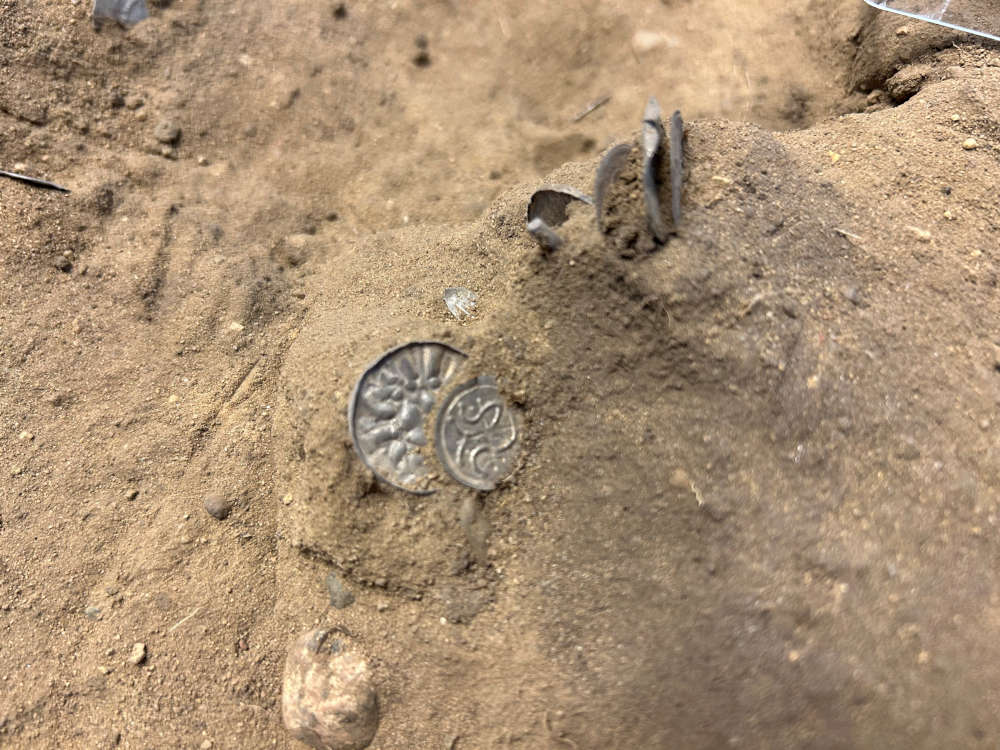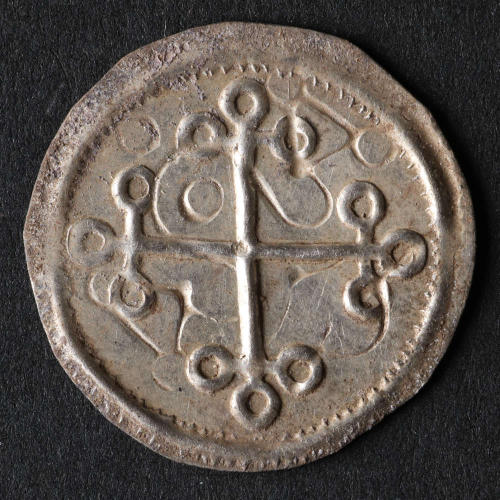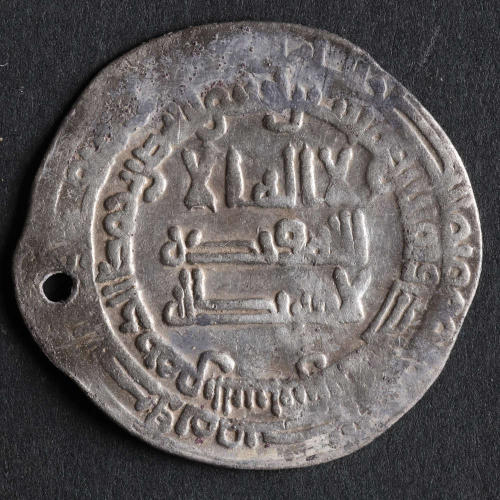Two Silver Coin Hoards
In the autumn of 2022, members of the Northern Jutland Detectorist Club found a series of silver coins in a field between Aarhus and Aalborg. The find site near Bramslev is located about eight kilometres from the Fyrkat Viking castle. As it turns out, these coins are from two Viking hoards that date back to the 980s. The nearby Fyrkat castle was also built in that period.
Inhalt
Two Silver Coin Hoards
Both treasures were found on the same field, less than 50 meters apart from each other. They both contain many small silver coins and fragments of silver jewellery, which were probably used as a means of payment based on weight. Both finds contain a total of about 300 silver pieces, including ca. 50 complete coins.
Ploughing, harrowing and sowing in the recent past damaged the hoards and scattered the pieces all over a large area. Since they had originally been buried quite close together, the coins and the rest of the silver got mixed up quite significantly. This makes it difficult for archaeologists to assign the individual pieces to one of the two hoards. However, it is clear that both treasures contained a mixture of Danish, German and Arab coins.
Cross Coins Date the Finds
Danish coins in particular have aroused the interest of the archaeologists. Among these pieces are the so-called cross coins of King Harald Bluetooth form the 970s and 980s. These late coins by King Harald differ from his earlier coinage due to the cross on one of the sides. It is very likely that he introduced the cross coins in the context of his Christianisation of the Danes – in other words, he used the coins to further spread the message that he had immortalised on the great Jelling Stone around 965.
The cross coins by Harald Bluetooth were only minted for a few decades, until he lost the struggle for power against his son Sweyn Forkbeard in the mid-980s. Both treasures are therefore from this highly dramatic period of the Viking age.
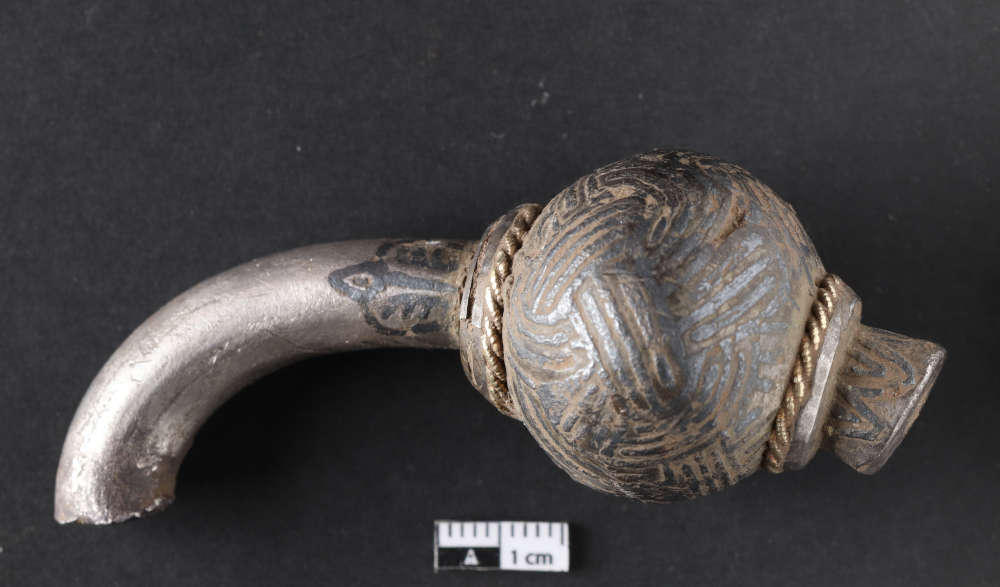
There were also two decorated spheres among the silver pieces. They are probably from the same piece of jewellery, a ring pin. Photo: Nordjyske Museer, Denmark.
Loot from Raids
In addition to coins, the hoards contain two other very interesting silver pieces. They have a weight of about 70 grams and obviously come from the same piece of jewellery. These pieces are two elaborately decorated spheres on a small polished silver rod, which had originally been part of an unusually large ring pin.
Such ring pins were worn in Viking Ireland and the neighbouring islands, especially by men of upper society. Some of these pieces of silver jewellery weighed about half a kilo, and judging by the size of these fragments, the piece from Bramslev belonged to this category. Jewellery of this size and quality was worn by bishops and kings.
The jewellery was probably loot from a raid and the Danish Vikings did not appreciate the artistic details of the piece. All that mattered to them was the weight of silver. Therefore, the ring pin was broken into pieces and the major part of it was probably used as a means of payment or melted down to create new Scandinavian-style jewellery.
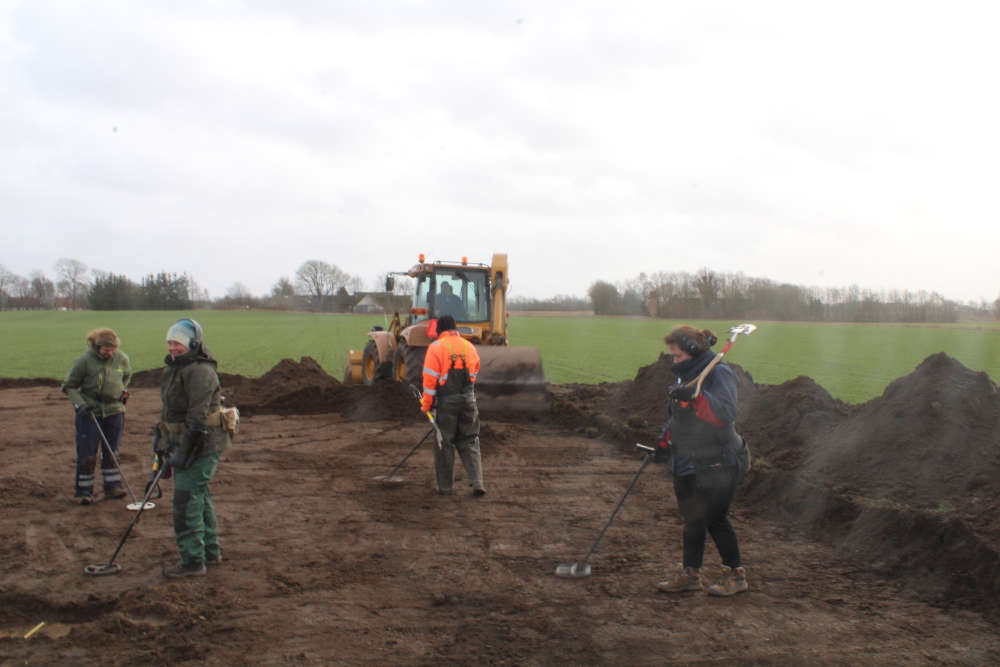
The two treasures were found on the same field, less than 50 meters apart from each other. Photo: Nordjyske Museer, Denmark.
A Settlement as a Lookout
Cross coins by Harald Bluetooth and fragments of silver jewellery are not rare among treasure finds in Denmark from the second half of the 10th century. What makes these hoards to exciting is where they were found: there was obviously a Viking settlement near Fyrkat.
“The two silver treasures in themselves represent an absolutely fantastic story, but to find them buried in a settlement just eight kilometres from Harald Bluetooth’s Viking castle Fyrkat is incredibly exciting,” says Torben Trier Christiansen, archaeologist and curator of the Nordjyske Museer.
Just like Harald’s other ring fortresses, Fyrkat was only used for a very short amount of time around 980. It is not known why these castles were abandoned, but signs of battles have been found in Trelleborg and on Zealand.
“Perhaps the castles were not given up entirely voluntarily, and perhaps it happened in connection with the final showdown between Harald Bluetooth and his son Sweyn Forkbeard. The Bramslev treasures were apparently buried around the same time or shortly after the castles were abandoned. If there have been disturbances at Fyrkat, it makes sense that the local magnate here at Bramslev chose to hide his valuables,” explains Torben Trier Christiansen.
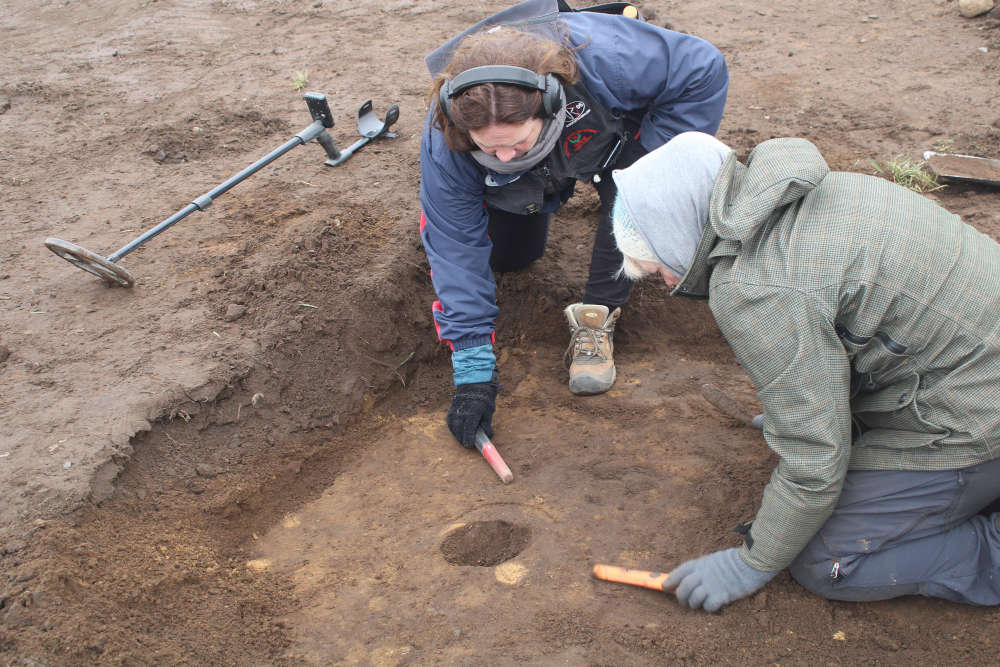
Overall, about 300 silver pieces were found during the examination of the site. Photo: Nordjyske Museer, Denmark.
According to Torben Trier Christiansen, Bramslev’s high location, overlooking large parts of Mariager Fjord, must indicate that the village played an important role when it came to defending Fyrkat.
“From the hill at Bramslev, you were able to quickly warn the troops on the castle against incoming enemy fleets from the Kattegat”, explains Torben Trier Christiansen. So, it was no ordinary Viking settlement. That is why the archaeologists of the Nordjyske Museer want to learn more about the Viking village that was once located where the treasures were found.
What Will Happen to the Finds?
In autumn, the archaeological examination of the region will go on. This work is financed by the Danish Agency for Culture and Palaces with DKK 400,000 (about EUR 54,000).
The archaeologists do not expect to find other silver treasures. However, during the examinations in spring, it became apparent that the hoards had originally been buried inside or in close proximity to buildings. The upcoming examinations will focus on analysing the traces of these buildings and on trying to find out whether the buildings were still in place when the treasures were buried, or whether they were just normal Viking houses.
As of 1 July 2023, interested parties can take a closer look at both silver treasures. They will be on display at the Aalborg Historical Museum.







